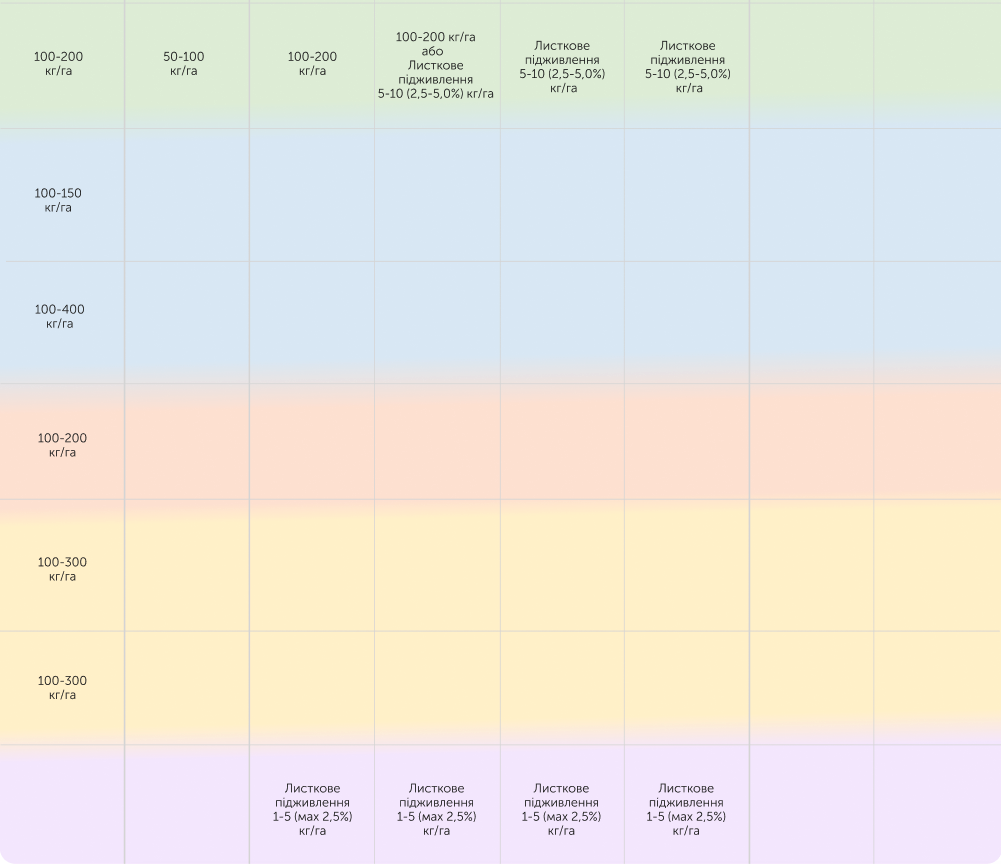








Principles of application
The group of spring cereals includes a few important crops: spring wheat, spring barley, oats, millet. These crops are different in their biologicalfeatures, growingand fertilization conditions. The less demandingcrop is oats.The main feature of spring barley and wheat is their usage that heavilydepends on protein content in the grain, which is regulated by nitrogen supply ratio. To get 1 t of grain with the corresponding amount of byproduct, the crop consumes around 22-27 kg of N, 10-12 kg of phosphorous, 19-24 kg of potassium and 3-4 kg of Sulphur.In the first 30 days of vegetation, spring cereals consume up to 45% of N, 65% of phosphorous and 70% of potassium.
Phosphorous-potassium fertilizers are the most suitable for basal application. At sowing application with phosphorous and nitrogen is also possible. The dose of phosphorous should not exceed 10-15 kg/haof P2O5 and 20 kg/hа of N. Feeding with phosphorous-potassium fertilizers is non-effective.
Nitrogen fertilizers can be used for fertilization program of spring cereals during basal, at sowing application and feeding . All forms of nitrogen fertilizers are suitable for basal application. During at sowing application nitrate form of nitrogen at higher doses has toxic effect on root system. At the recommended doses ammonia and amid forms of nitrogen do not have toxic effect on root system. Feeding is applied 1-3 timesdepending on crop nitrogen demand. Feeding is the most efficientin the initial phases of development before intensive stem growth. The maximum nitrogen consumption by spring crops is recorded in the tillering and stem elongation stages and that is about 40% of crop nitrogen demand. Feeding in the later stages of growth does not compensate nitrogen deficiencies was observed during initial stages and so that does not improve yield.
To get spring wheat and barley yield of about 7-8 tons it is recommended to apply 150 kg/ha of N, 50-80 kg/ha of P2O5and 60-100 kg/ha of K2O.Nitrogen rate is to be reduced to 30-50 % when it is applied under malted barley.
At the beginning of vegetation, phosphorous supply can becritical for millet, that is why phosphorous fertilizers applicationaddresses adverse impact of its deficiency before or during sowing. At the beginning of booting stage intensity of all nutrients uptake significantly increases.Oats uniformlyabsorbs nutrients throughout vegetation, but the crop is particularly sensitive tonitrogen shortage at tillering and at the beginning of booting stage.While sowing spring cerealsafter tilling between row,fertilizersrates can be reduced to 25-30%.